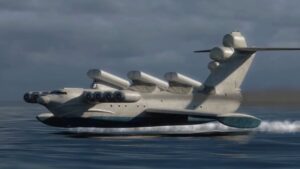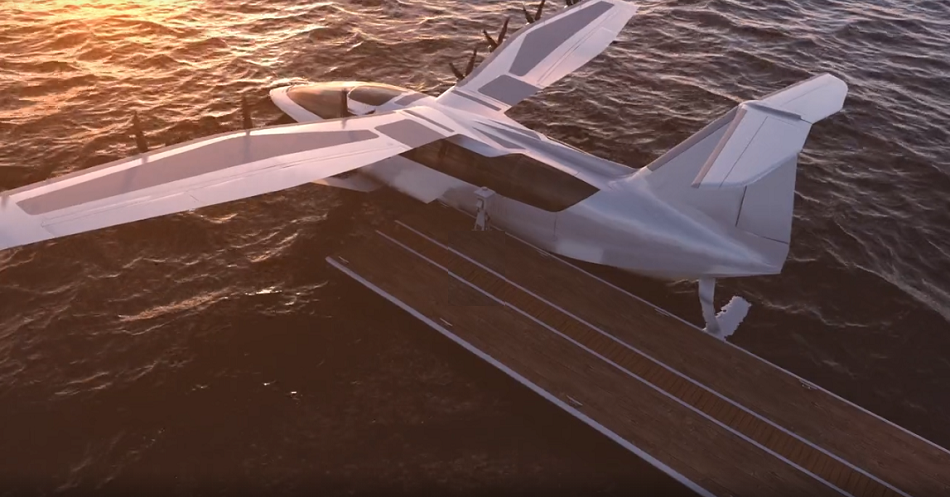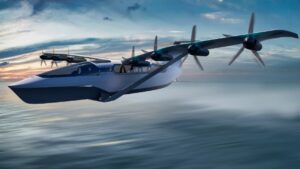Have you ever seen a flying fish? They jump off the water and glide up to 10 m almost effortless. You wonder how they can go so far without wings. The reason is that they exploit the air cushion that forms between their flat body and the water surface. Practically they fly with very little energy. Aviation has already tried to take advantage of the same physical principle more than 50 years ago when the Soviets built the Ekranoplan, a huge warplane capable of flying a few meters above the sea surface, undetected by radars, a gift with several nuclear warheads.
A Singapore based company has built a prototype of original plane capable of flying between coastal cities a couple of meters on the surface of the water, the Airfish, thus economizing fewer and connecting their ports. Such a plane would be much faster than normal planes, because ports are very close to city centers and it can fly at 280 km/h. But that plane is powered by a big Chevrolet Corvette V-8 engine, thus being polluting and burning quite a bit of gasoline.

Regent Seaglider, the new all electric lighting passenger plane
Regent is an American company which manufactures all-electric, passenger-carrying, wing-in-ground-effect regioal or private planes to service coastal routes with technology available today. Zero-emission, ultra-low-altitude travel with a range of 180 miles (290 km) at 180 mph (290 kph); the airplane can use existing dock infrastructure.
Some travel companies have already booked Regent planes: Split Express.com Croatian fast ferry operator servicing Split to the Croatian islands; Goombay Air Bahamas premier seaplane operator; Fly The Whale Land and Sea based Charter company specializing in transfers from Manhattan and throughout the Caribbean.
A new approach for regional travel
The Regent Seaglider boast lower costs, thanks to the electric propulsion that requires very little maintenance and consumes electricity in quantities at least 4 times cheaper moreover, Seaglider’s 100% electric propulsion system enables zero-emission, high-speed transportation.
How the Regent Seaglider works
This water-taxi concept transitions between multiple modes. After leaving the dock, it operates at speeds between 20 and 45 mph, running on foils, which keeps the fuselage above the waves for a comfortable ride. Once reaching open water, seaglider takes off and accelerates to between 145 and 180 mph.

Instead of flying high, the seaglider operates like a hovercraft, using “ground effect,” or the cushion of air beneath the wings, to stay within a wingspan of the water’s surface. The company said in a statement that flight safety is accomplished through redundant navigation-and-control systems. Ground effect, according to the company, will give the seaglider twice as much range as a conventional electric aircraft.
Seaglider will require half the operating costs of a traditional aircraft, and with much less noise and zero emissions
After the Seaglider lands on the water, it switches to a foiling boat as it taxis to the docks. The innovative design gives the eight-engine craft an edge over other electric and conventional aircraft that are forced to take off from fixed landing areas. It also doesn’t require any special infrastructure, so can use existing docks. The company says it’s also six times faster than a conventional ferry.
Regent has received $465 million in provisional orders from commercial airlines and ferry companies. Founders Billy Thalheimer and Mike Klinker both studied aerospace engineering at MIT and worked together at Aurora Flight Sciences and Boeing before launching the company. Serving as CEO, Thalheimer has designed different electric aircraft, while CTO Klinker has built and written control software for over a dozen aircraft.

